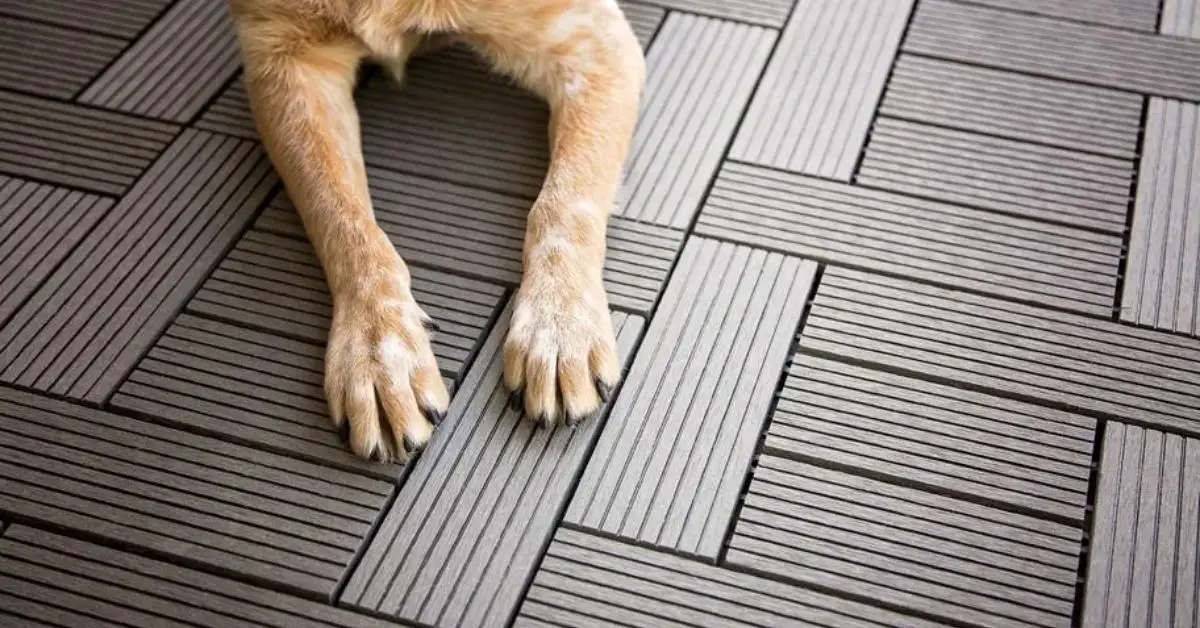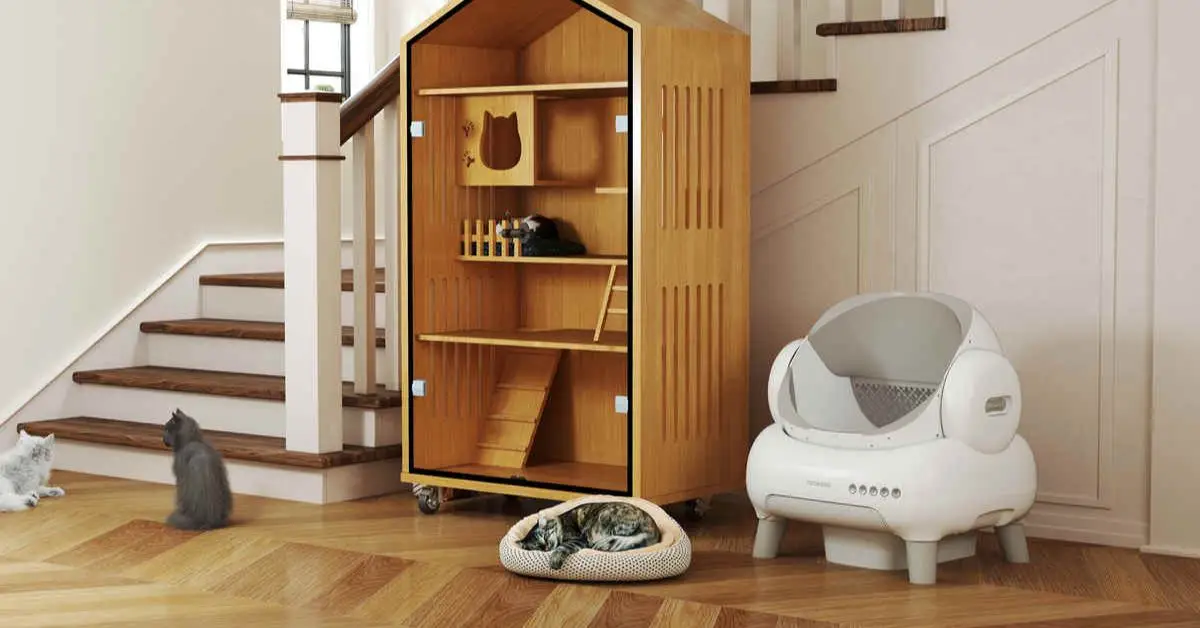Avoid These 5 Home Design Blunders That Upset Your Pets
When I walk into a “perfect” living room and see a dog pacing or a cat hiding under the bed, I know the problem isn’t obedience—it’s design. The space feels calm to you, but the surfaces, smells, noise, and layout can quietly wind your pet up all day.
Most advice online talks about stain‑proof sofas and scratch‑resistant floors. Useful, sure—but this isn’t a cleaning checklist. I’m going to show you how a few everyday choices create low‑level stress for pets, and the simple swaps that ease it fast.
Think slippery floors that make every step tense, strong scents that overwhelm, blocked views that frustrate curious cats, layouts that create constant startles, and rooms that trap heat or feel gloomy. None of this needs a remodel; you’ll fix most of it with small, smart changes.
By the end, you’ll know exactly which five mistakes to avoid and what to do instead—so your home looks good and your pet actually relaxes in it.
Quick one before we start: what’s the one spot your pet avoids or keeps fixating on—your hallway, the sofa, or the window area?
Why Your Home Design Choices Impact Pet Stress Levels
If you’ve ever noticed your dog scratching doors when you leave, or your cat disappearing into the closet whenever there’s noise, it’s not just “quirky behaviour.” It’s their way of coping with stress. Just like us, pets respond directly to the spaces they live in—whether it’s the surfaces they walk on, the air they breathe, or even the corners they can’t escape from.
Research from the American Veterinary Medical Association shows that changes in environment can trigger anxiety in pets. Loud echoes, slippery floors, or even the lack of a quiet resting spot can raise their stress hormones. Over time, that stress doesn’t just make them restless—it affects their long-term health too.
That’s why it matters: your home design choices aren’t just about making a place look pretty. They’re shaping how calm or anxious your pet feels every single day.
Mistake #1 – Ignoring Safe Flooring Choices

I learned this the hard way with my own dog. The glossy tiles in my living room looked amazing, but every time he walked across them, his paws slipped. He started moving slower, hesitating at corners, and eventually, his back legs showed signs of strain.
Slippery floors and poor rugs can quietly damage your pet’s confidence and even lead to injuries. Vets often warn about joint issues in older dogs that worsen with unsafe flooring. If you’re looking for a pet-safe option that’s also kind to the planet, cork flooring is one of the best eco-friendly choices for your home, offering both grip and comfort for paws.
Common flooring mistakes:
- Smooth tiles and polished hardwood that cause slips
- Thin rugs that fold or snag claws
- Shiny finishes that make pets hesitate to cross
Competitors often stop at “use pet-friendly rugs.” But the real problem is stress + pain. Flooring that feels unsafe makes pets cautious, anxious, and less likely to explore their own home.
Mistake #2 – Using Toxic Plants & Decor
Your indoor jungle might look stunning, but some of those plants could be stressing—or even poisoning—your pets. Cats and dogs don’t always know what’s dangerous, and they’ll chew on leaves or flowers out of boredom or curiosity.
Some common toxic plants you should think twice about:
- Lilies (deadly for cats)
- Aloe vera
- Philodendron
- Pothos
According to the ASPCA’s toxic plants database, even a small nibble from these can cause vomiting, lethargy, or worse. And it’s not just plants—things like strong scented candles, essential oils, or decorative potpourri can overwhelm pets’ senses.
And if you’re worried about pests sneaking in around your indoor plants, you can try eco-friendly methods to get rid of earwigs without chemicals to keep your home safe for both you and your pets.
Most guides say “avoid toxic plants” but don’t actually name them or show proof. By giving specifics + authority, you can take real action today and swap harmful items for safe alternatives like spider plants or areca palms. Instead of risky greenery, check out kitchen-friendly houseplants you’ll regret not buying sooner—they’re safe, practical, and brighten your space without stressing your pets.
Mistake #3 – Skipping Quiet, Dedicated Pet Spaces

Think about it: when you’ve had a long, noisy day, you probably crave your own corner to switch off. Pets are the same. Without a safe spot, they end up overstimulated by constant movement, sound, or even smells in the house.
Signs your pet is stressed from lack of space:
- Cats hiding in closets or under beds
- Dogs barking excessively or pacing
- Over-grooming or destructive chewing
That small, dedicated space gave the cat the relief it needed.
Most guides talk about scratch-proof sofas, but they miss the emotional side of design. Pets need calm zones, not just durable furniture.
Mistake #4 – Overlooking Hazardous Furniture & Layout
Your furniture may look stylish, but for pets, it can be a maze of hazards. Sharp table corners, shaky shelves, or dangling wires can cause injuries or even fires.
I’ve seen cases where dogs chewed through cords and sparked small electrical fires—something no pet owner expects until it happens. Beyond the safety scare, the financial burden can be huge. According to Forbes, U.S. pet injury costs run into billions every year, with home accidents making up a big share.
Common layout risks:
- Glass tables at pet height
- Wobbly bookshelves they can topple
- Loose cords, chargers, or drapes
Safety isn’t just about your décor—it’s about your pet’s health and your wallet. Competitors ignore the money angle, but when you realize one accident could cost thousands, you’ll see why prevention is urgent.
Mistake #5 – Forgetting Airflow & Natural Light

Ever noticed how calm pets look when they’re stretched out in a sunny spot? That’s not just cuteness—it’s biology. Poor airflow and dark rooms increase stress, especially for cats and short-nosed dogs who struggle with breathing.
Fresh air and light improve circadian rhythms, reduce cortisol, and even support better sleep in pets. Vets often compare it to how we feel in stuffy, dim spaces—anxious, restless, and tired.
None of the top guides talk about light and air. Yet, it’s one of the easiest fixes: open windows safely, use sheer curtains, and let natural light in. Your pet’s mood will thank you.
Small Fixes That Make a Big Difference
Here’s the good news: you don’t need a full renovation to make your home calmer for your pets. Small, practical tweaks can completely change how safe and relaxed they feel. I’ve tried a few of these myself, and the difference is instant—you’ll see it in the way your pet moves, rests, and even plays.
Quick checklist to start with:
- Swap toxic plants with safe options like spider plant or areca palm.
- Add washable slip-resistant rugs where floors are too smooth.
- Create a quiet corner with a soft blanket or bed for downtime.
- Secure cords and furniture to prevent chewing or tipping accidents.
- Open windows or use sheer curtains to let in natural light and fresh air.
These fixes don’t take much time or money, but they tell your pet: this space is safe for you. And once they feel that, the stress starts to melt away.
Final Thoughts – Designing a Home That Loves Your Pets Back
When you look back at these five mistakes—slippery floors, toxic plants, missing quiet spaces, unsafe furniture, and poor airflow—they all have one thing in common: they quietly add stress your pets can’t tell you about. But the flip side is powerful too: once you fix them, your home becomes a place where your dog trots confidently, your cat naps in peace, and you feel calmer just watching them.
Remember, pets mirror our energy. If their environment makes them anxious, you’ll feel it too. A mindful, pet-first design isn’t about spending more—it’s about noticing the details that matter to them.
So, start small. Swap a rug, move a plant, open a window. Each change sends your pet the same message: you belong here, and you’re safe.
What about you—have you noticed one spot in your home that your pet avoids or struggles with? Share it in the comments; your story might help another pet parent.
For more practical home improvement tips and design ideas, visit Build Like New and explore guides that make your home better for everyone—two-legged and four-legged alike.
Disclaimer: This article is for informational purposes only. Always consult a qualified veterinarian before making changes that may affect your pet’s health or wellbeing.


